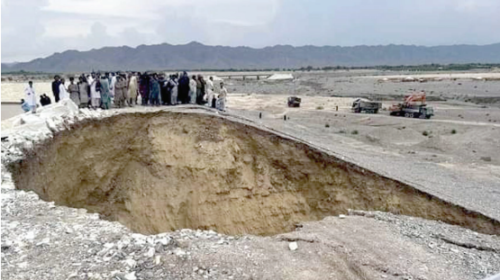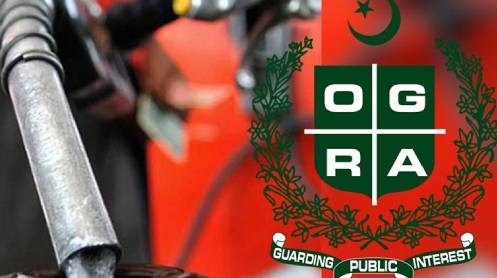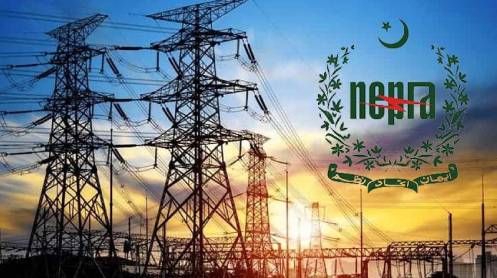Climate change is playing havoc with the economic and social fabric of the country. The numbers are grim and point towards the enormity of the challenge ahead.
The recent floods have inundated more than 250,000 km2 of land. Agriculture crops have been destroyed over an area of one million acres. Millions of animals are facing acute shortage of fodder, which is severely impacting their health and productivity.
In addition, more than one million animals have been killed, depleting the livestock of the country.
Pakistan has suffered infrastructure damages equivalent to approximately $12 billion. Human displacement is another challenge, which is aggravating with every passing moment. Almost 35 million people have been directly affected.
Although the floodwater is now receding, it has given birth to multi-dimensional challenges. Food availability is becoming a major concern, which will result in food insecurity.
Pakistan is already home to 58.8% of the population with different levels of food insecurity. The destruction to food storages, standing crops, killing of animals and impact on the health of livestock will further aggravate this situation. Rough estimates reveal that floods will add 10-15% to the existing food-insecure population.
Secondly, millions of people have been displaced. They have lost their livelihoods and remain uncertain as to what the future holds. They are thus fighting for their survival.
Income is one of the key determinants of food security. Pakistan, already mired in poverty and unemployment, has limited capacity to cope with the scale of the challenge.
The country already finds itself embroiled in a financial crisis, with a rising current account deficit and double-digit inflation. Thus, it does not have the financial resources to invest in the restoration of infrastructure and secure livelihoods and food security for those affected.
In this backdrop, the nation is left with no choice, but to request the international community for help and assistance.
Pakistan has already launched a campaign for engaging the international community. It is targeting the immediate needs of the flood stricken and is working on securing aid from the world community. However, we cannot afford international loans at this point in time.
In this backdrop, Pakistan needs to devise a smart, future-oriented policy and plan of action. For this purpose, the country needs to come out of the ‘victimhood mind set’.
It must understand that this policy can only attract sympathies of the international community. It can only help to secure millions, while the country is in need of billions of dollars for economic recovery.
Since climate disasters have become the new normal, countries are left with meagre resources to help one another, especially in the wake of an economic recession.
Therefore, it is suggested that Pakistan should work on an investment plan titled “Climate Compatible Rehabilitation and Development Plan” (CCRDP). CCRDP should be presented to the world with two core objectives.
Firstly, Pakistan needs investment to rebuild infrastructure and secure livelihoods. Aid will not suffice for this purpose.
Secondly, Pakistan is committed to sustainable development goals (SDGs) and tackling climate change, but needs investment to move on the path of climate compatible development. Thus, developed countries and the UN need to invest in CCRDP in line with their commitments under the Paris Agreement on climate change.
It needs to be communicated to the UN and other development partners that we are here for long-term sustainable solutions, not merely for aid.
Besides, CCRDP can also be shared with the private sector to attract investment on the model of Build, Operate and Transfer (BOT), especially for infrastructure. Green climate financing is another good avenue for attracting investment.
The China-Pakistan Economic Corridor (CPEC) presents a unique opportunity to realise the objectives of CCRDP. Pakistan can draw investment through CPEC, especially for agriculture, infrastructure and the creation of livelihood opportunities. China is also championing the cause of mitigating impact of climate change and green development.
However, to attract investment, Pakistan will need to improve the existing policy and institutional arrangements. It needs a reality-based climate change policy and action plan.
At present, Pakistan’s climate change policy seems to be largely donor-driven. It is focusing too much on mitigation at the cost of adaptation. Pakistan needs to redirect its focus and concentrate more on issues related to adaptation.
The country must change its policy of victimhood and concentrate on developing and selling business plans like CCRDP to the international community and other development partners. We should develop a plan on the basis of vulnerability index and devise tools by sticking to the principles of climate compatible development.
However, to make this successful, CCRDP must be followed by favourable policy frameworks, institutional arrangements and sustainable incentives.
Pakistan must understand that the existing complicated policy frameworks and the inefficient institutional setup cannot attract financing and investment. The government should come out of the advocacy mentality and concentrate on implementation.
In conclusion, there is a need to accept the reality that we are living in the era of climate change and that aid cannot solve all our problems. We need to be innovative and come up with an investment plan along the lines of CCRDP. Nations are built with hard work and dedication, not with false slogans and crying for help.





